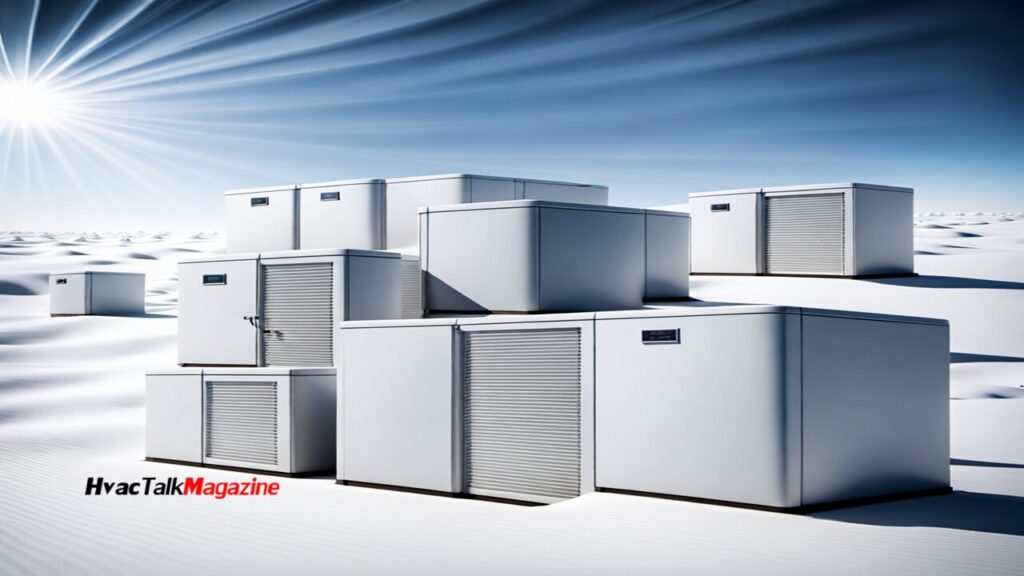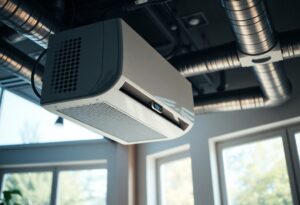Top 10 Common HVAC Problems and How to Troubleshoot Them
As a homeowner, you rely on your HVAC system to provide comfort and safety for you and your family. However, it can be frustrating and even dangerous when it breaks down, especially during extreme weather conditions. The good news is that many common HVAC problems can be easily identified and fixed with some basic troubleshooting skills. In this article, you’ll learn how to diagnose and potentially fix the top 10 common HVAC problems, saving you time, money, and stress. By the end of this post, you’ll be equipped with the knowledge to take control of your HVAC system and ensure it’s running efficiently and effectively all year round.
Common HVAC Problems: Key Takeaways:
- Faulty Thermostats can cause issues with your HVAC system. Check the thermostat’s battery, ensure it’s set correctly, and consider replacing it if it’s old or malfunctioning.
- Clogged Air Filters can reduce airflow and increase energy bills. Replace filters every 1-3 months, depending on usage and manufacturer’s recommendations.
- Leaks in the Ductwork can lead to energy loss and uneven heating/cooling. Inspect ducts for signs of damage, rust, or gaps, and seal them with mastic sealant or foil tape.
- Refrigerant Leaks can cause the system to malfunction. Look for signs of refrigerant leaks, such as ice buildup or hissing sounds, and contact a professional to repair or replace the affected components.
- Capacitor Issues can prevent the compressor and fan motor from working properly. Check the capacitor for signs of wear, swelling, or burning, and replace it if necessary.
- Drainage Problems can lead to water damage and mold growth. Ensure the condensate drain is clear, and check the drain pan for blockages or rust.
- Regular Maintenance is key to preventing common HVAC problems. Schedule annual tune-ups with a professional to inspect and maintain your system.
Common HVAC Problems
The following are some of the most common HVAC problems with your HVAC system.
1 Thermostat Issues
One of the most common HVAC problems is thermostat issues. If your thermostat is not functioning correctly, it can prevent your system from heating or cooling properly, leading to uncomfortable temperatures and increased energy bills.
2 Leaks and Water Damage
Water is a silent destroyer of HVAC systems. Leaks and water damage can cause significant problems, including rust, corrosion, and mold growth. These issues can lead to costly repairs and even system failure if left unchecked.
Thermostat malfunctions can also contribute to leaks and water damage. For example, if your thermostat is stuck in heating mode, it can cause your system to produce excessive condensation, leading to water leaks. Regular maintenance and inspections can help identify these issues before they become major problems.
3 Dirty Air Filters
An often overlooked but crucial component of the HVAC system is the air filter. If your air filter is dirty, it can reduce airflow, increase energy bills, and even cause your system to break down. Dirty air filters can also lead to poor indoor air quality, exacerbating respiratory issues and allergies.
Damaged or dirty air filters can also cause your system to work harder, leading to increased energy consumption and wear and tear on the system. By replacing your air filters regularly, you can ensure your system runs efficiently and effectively.
4 Frozen Coils
To ensure your HVAC system runs smoothly, it’s necessary to keep your coils clean and free of debris. Frozen coils can prevent your system from cooling or heating properly, leading to reduced airflow and increased energy bills.
It’s necessary to inspect your coils regularly to ensure they’re clean and free of debris. If you notice ice or frost buildup on your coils, turn off your system and contact a professional to diagnose and repair the issue.
5 Inadequate Maintenance
Inadequate maintenance is a common problem that can lead to a range of issues with your HVAC system. Failure to perform regular maintenance tasks, such as cleaning filters and coils, can cause your system to break down, leading to costly repairs and even system failure.
A well-maintained HVAC system is necessary for ensuring your home remains comfortable and energy-efficient. By prioritizing regular maintenance, you can identify potential issues before they become major problems, saving you time and money in the long run.

Common HVAC Problems: Troubleshooting Techniques
To effectively troubleshoot your HVAC system, you’ll need to employ some necessary techniques to identify the problem, gather the right tools, and take necessary safety precautions.
6 Identifying the Source of the Problem
Problem diagnosis is crucial in HVAC troubleshooting. Take your time to observe your system’s behavior, noting any unusual sounds, smells, or temperature fluctuations. Check your thermostat settings, air filters, and vents to ensure they’re clean and functioning correctly.
7 Basic Tools and Equipment Needed
One of the most critical steps in troubleshooting is having the right tools for the job. You’ll need a multimeter, screwdrivers, pliers, and a wrench to perform basic checks and repairs.
With these tools, you’ll be able to measure electrical currents, tighten loose connections, and disassemble components to inspect for damage or wear. Don’t forget to add a flashlight and a ladder to your toolkit, as they’ll come in handy when accessing hard-to-reach areas.
8 Safety Precautions to Take
Techniques like electrical safety and proper ventilation are vital when working with HVAC systems. Always turn off the power to your system before performing any repairs, and ensure you have a clear escape route in case of an emergency.
The risks of electrical shock, gas leaks, and refrigerant exposure are real, so it’s necessary to take necessary precautions to protect yourself and others. Wear protective gear like gloves, safety glasses, and a face mask to minimize the risk of injury.
9 When to Call a Professional
Call in a professional if you’re unsure about the problem or feel uncomfortable performing repairs yourself. Don’t risk causing further damage or putting yourself in harm’s way.
Tools and expertise are not the only factors to consider; sometimes, complex issues require specialized knowledge and equipment. If you’ve tried troubleshooting and still can’t resolve the issue, it’s time to call in a qualified HVAC technician to diagnose and fix the problem.
Do not forget, that safety should always be your top priority when working with HVAC systems.
10 Solutions to Specific Problems
For each of the common HVAC problems mentioned earlier, there are specific solutions you can implement to troubleshoot and fix them.
Fixing Thermostat Malfunctions
An incorrectly set thermostat can lead to inefficient heating and cooling. Check your thermostat’s battery level, ensure it’s set to the correct mode (heating or cooling), and adjust the temperature setting accordingly.
Repairing Leaks and Water Damage
Damage to your HVAC system’s condensate drain line can cause water leaks and damage. Inspect the line for blockages, kinks, or cracks, and repair or replace it as needed.
Understanding the importance of clean air filters cannot be overstated. A clean filter not only improves system efficiency but also helps maintain good indoor air quality and reduces the risk of system breakdowns.
Defrosting Frozen Coils
Problems with frozen coils can lead to reduced airflow and system failure. Turn off the system, let it thaw, and inspect the coils for damage or debris buildup.
This simple step can save you from costly repairs down the line. Remember to also check the condensate drain line and ensure it’s clear of blockages to prevent future freezing issues.
Scheduling Regular Maintenance
Repairing your HVAC system regularly can help prevent many common problems. Schedule annual tune-ups with a licensed technician to ensure your system runs efficiently and effectively.
Leaks, corrosion, and worn-out parts can all be identified and addressed during regular maintenance. By staying on top of maintenance, you can extend the lifespan of your system, reduce energy bills, and enjoy a more comfortable living space.
The Tip of the Day
Upgrade your home’s comfort with a top-rated HVAC system! Enjoy efficient heating and cooling all year round with advanced technology and reliable performance.
👉 Shop now and find the perfect HVAC system for your needs. Enhance your home’s climate control and energy efficiency today!
Common HVAC Problems: To wrap up
With this in mind, you now have the knowledge to tackle the top 10 common HVAC problems that may arise in your home or office. By being proactive and following the troubleshooting steps outlined in this article, you can avoid costly repairs, reduce energy bills, and ensure a comfortable living or working space. Recall, that taking care of your HVAC system is an investment in your well-being and wallet. Stay on top of maintenance, and your system will reward you with years of reliable service.
Common HVAC Problems: FAQ
Q: What are the most common HVAC problems that homeowners face?
A: According to HVAC experts, the top 10 most common HVAC problems include thermostat issues, dirty air filters, refrigerant leaks, frozen coils, faulty capacitors, drainage issues, ignition problems, sensor malfunctions, electrical connections, and compressor failures. These issues can lead to inefficient heating and cooling, increased energy bills, and even system breakdowns.
Q: How do I troubleshoot a faulty thermostat?
A: To troubleshoot a faulty thermostat, start by checking the battery level and replacing it if necessary. Ensure that the thermostat is set to the correct mode (heating or cooling) and that the temperature is set correctly. Check for any signs of physical damage or corrosion on the thermostat and replace it if needed. If the issue persists, consult a professional HVAC technician to diagnose and repair any underlying electrical issues.
Q: Why is my HVAC system blowing warm air when it’s supposed to be cooling?
A: This could be due to a refrigerant leak, which is a common HVAC problem. Refrigerant leaks can cause the system to malfunction and blow warm air instead of cool air. Other possible causes include a faulty compressor, blocked air vents, or a malfunctioning thermostat. It’s recommended to contact a professional HVAC technician to diagnose and repair the issue.
Q: How often should I replace my air filters to prevent common HVAC problems?
A: It’s recommended to replace air filters every 1-3 months, depending on usage and environmental factors such as pet ownership, allergies, and dust levels. Dirty air filters can reduce airflow, increase energy bills, and even cause system breakdowns. Regularly replacing air filters can help prevent common HVAC problems and ensure efficient system operation.
Q: What are the signs of a frozen coil, and how can I troubleshoot it?
A: Signs of a frozen coil include reduced airflow, increased energy bills, and water leaks around the HVAC unit. To troubleshoot a frozen coil, turn off the system and let it thaw for 24 hours. Check for blockages in the air vents and ensure proper airflow. If the issue persists, check the refrigerant levels and inspect the coils for damage or corrosion. It’s recommended to contact a professional HVAC technician for further assistance.
Q: Can I DIY HVAC repairs, or should I hire a professional?
A: While some common HVAC problems can be DIY-repaired, it’s recommended to hire a professional HVAC technician for most repairs. HVAC systems are complex and require specialized knowledge and tools to diagnose and repair correctly. Improper repairs can lead to further damage, safety hazards, and even system breakdowns. Professional technicians can provide accurate diagnoses and efficient repairs to ensure your system operates safely and efficiently.
Q: How can I prevent common HVAC problems from occurring in the first place?
A: To prevent common HVAC problems, regular maintenance is key. Schedule annual tune-ups with a professional HVAC technician to inspect and clean the system, replace air filters, and identify potential issues before they become major problems. Additionally, ensure proper installation, keep the surrounding area clean and clear, and avoid blocking air vents. By taking these proactive steps, you can reduce the risk of common HVAC problems and ensure efficient system operation.
Learn more and join our mailing list for updates.
Follow Us on Google Chrome
To get started, switch to Google Chrome Browser
1. Already on our site
2. Top right, tap the 3 dots
3. Bottom right, tap follow
4. You are done.
This post has been written by Team HVAC Talk Magazine. Stay informed and connected with the latest in HVAC—join us for expert advice, troubleshooting tips, and news updates. Don’t miss out, follow us now! #HVACExperts #HVACTips #StayInformed #HVACProTalk!










